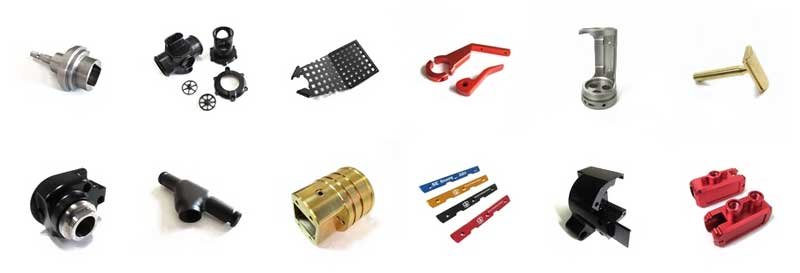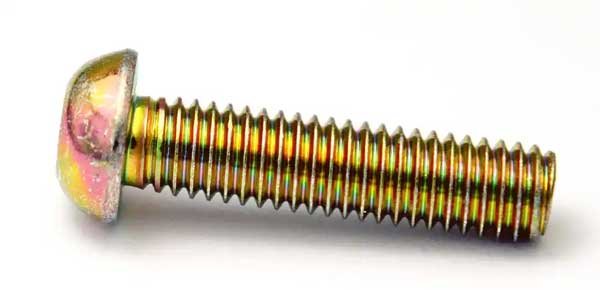Surface Treatment for Workpieces After Vertical Machining Center (VMC) Processing
CNC machining processes are capable of producing precise parts and components with strict tolerances of ±0.025 mm and intricate details. However, parts manufactured by a vertical machining center (VMC) often exhibit noticeable machining marks. Therefore, surface treatment is a critical aspect of the manufacturing process, enhancing the aesthetic appeal, corrosion resistance, wear resistance, and other physical and functional properties of metal parts post-VMC processing. Different types of surface treatments involve varying procedures and results, making it essential to understand the basics to select the most suitable option.
1. Reasons for Surface Treatment
VMC machining often leaves visible machining marks that affect the surface quality of the processed parts. Despite the precision of VMC machining, these parts require surface treatment for various reasons:
Improving Appearance
Surface treatments such as grinding, polishing, electroplating, or painting help mask sharp edges and machining marks left during the VMC process. These treatments enhance the visual appeal of the machined parts.
Enhancing Corrosion Resistance
Many materials used in VMC machining are susceptible to corrosive substances. Designers frequently apply surface treatments like anodizing, polishing, and passivation to protect the machined parts and extend their lifespan.
Improving Cleanliness and Hygiene
Manufacturers apply surface treatments to VMC-machined components to ensure they are easy to clean and maintain. This is particularly crucial in applications where hygiene is critical, such as food processing equipment and medical devices.
Functional Performance
Different surface treatments can improve material properties (e.g., conductivity), reduce friction, and add other desirable characteristics, optimizing the functional performance of the machined components.
Customization
The desired surface finish can be customized to meet specific preferences and requirements, achieving various surface characteristics, textures, or colors.
2. Types of Surface Treatments
Different surface treatments are suited to various VMC machining materials, and the surface roughness values for each may vary. Selecting the treatment that best ensures the optimal performance, functionality, durability, and aesthetic appeal of the machined parts is critical.
Polishing
Polishing is a common mechanical finishing process that uses abrasives or chemicals to create a high-gloss, mirror-like surface on metal parts. It enhances physical properties, improves corrosion resistance, increases cleanliness, and reduces friction. However, the process can be time-consuming and labor-intensive, especially for machined parts with high gloss requirements or complex geometries.
Sandblasting
Sandblasting is a widely used mechanical finishing technique that involves using a pressurized air gun to blast small glass beads or other abrasives onto the surface of parts. This process smooths the surface, providing a consistent matte or satin finish with a light texture, effectively removing visible tool marks, burrs, and other imperfections. Sandblasting focuses more on improving aesthetics than functionality.
Anodizing
Anodizing creates a protective oxide layer on the surface of machined metal parts. This coating protects the metal parts from corrosion and wear by immersing the parts in a diluted sulfuric acid solution and applying voltage between the part and a cathode.
Type I (Chromic Acid Anodizing): The thinnest layer, it does not alter part dimensions and has a grayish appearance.
Type II (Sulfuric Acid Anodizing): Safer than Type I, it offers better paint adhesion and allows for various colors. Also known as decorative or standard anodizing, it produces coatings up to 25 µm thick.
Type III (Hard Anodizing): Common for aluminum and titanium alloys, this type creates a clearer surface with thicknesses between 0.001 and 0.004 inches. Combining Type III anodizing with PTFE/Teflon produces a dry lubricating surface. However, thicker Type III coatings can cause brittleness under high stress, making it important to consider application needs when choosing between Type II and Type III.
Alodine (Chromate Conversion Coating)
Alodine is a proprietary process for chromate conversion coating. This chemical surface treatment involves dipping machined parts into a proprietary formula containing chromium as a key component.
The protective coating acts as a corrosion inhibitor and improves paint and adhesive adhesion. Unlike other finishes that inhibit thermal and electrical conductivity in aluminum parts, Alodine enhances conductivity. However, this cost-effective treatment is prone to scratches and surface damage.
Powder Coating
Powder coating is an electrostatic process that applies a dry powder to create a thin, uniform protective layer on VMC-machined parts. Compatible with all metals, powder coating strengthens parts and enhances corrosion and wear resistance.
Electroplating
Electroplating involves depositing a metal coating onto the surface of machined parts to increase their thickness. This treatment protects parts from corrosion, impact, high temperatures, and rust, making them highly durable.
Unlike other surface treatments, electroplating is less environmentally friendly due to hazardous waste production. Additionally, it is time-intensive and relatively costly due to the equipment, metals, and chemicals required.
Passivation
Passivation protects the surfaces of ferrous materials, such as steel and stainless steel, from corrosion or rust, enhancing appearance, performance, and cleanliness. This chemical treatment involves immersing machined metal parts in acidic solutions like nitric or citric acid to remove surface iron and create a smooth, polished finish.
The passivation process may lengthen production time, as machined metal parts require pre-treatment. While immersion is the most common method for faster cycles and higher consistency, acid spraying is a better alternative in some cases.
Electroless Nickel Plating
Electroless nickel plating forms a nickel alloy protective layer on VMC-machined parts to enhance corrosion resistance. It uses a nickel bath and a chemical reducing agent (such as sodium hypophosphite) to deposit a nickel alloy layer, usually nickel-phosphorus, onto metal parts. Components treated with this method exhibit excellent hardness and wear resistance, which can be further improved through heat treatment.









